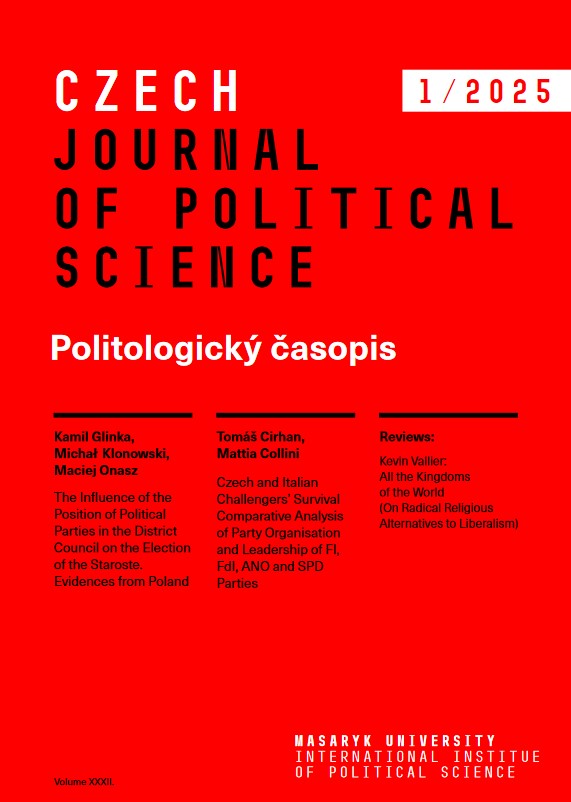Czech and Italian Challengers’ Survival Comparative Analysis of Party Organisation and Leadership of FI, FdI, ANO and SPD Parties
Czech and Italian Challengers’ Survival Comparative Analysis of Party Organisation and Leadership of FI, FdI, ANO and SPD Parties
Author(s): Tomáš Cirhan, Mattia ColliniSubject(s): Philosophy, Social Sciences, Political Sciences, Governance, Government/Political systems, Electoral systems, Comparative politics
Published by: Masarykova univerzita nakladatelství
Keywords: challenger parties; populist radical right parties; party survival; party organisation; party elite; party membership; local party organisation
Summary/Abstract: Our paper explores the organisational and leadership strategies of new challenger parties in Czechia and Italy. The electorally volatile party systems in the countries of Central-Eastern and Southern Europe are associated with the constant emergence of new parties. Czech and Italian party systems are great examples of this phenomenon. Whilst many newcomers make electoral breakthroughs, only some outlive their initial electoral success. Organisational survival and the role of party leaders often precede the parliamentary survival of these parties. We compare the organisational and leadership strategies of four such parties. Our case studies include Forward Italy/Forza Italia (FI), YES2011/ANO2011 (ANO), Brothers of Italy/Fratelli d'Italia (FdI) and Freedom and Direct Democracy/Svoboda a přímá demokracie (SPD). All four emerged running on the anti-establishment ticket challenging the established parties. Simultaneously to being formed as challenger parties, the former two are considered the pioneers of entrepreneurial parties. The latter two, represent the most successful populist radical right parties in their respective countries.Analysing their statutes and organisational affairs, we explore the internal decision-making and positions of party leaders. Leader's decision-making capacity, interventions to the autonomy of territorial structures, and parties´ policy towards membership form the basis of our comparative analysis. It allows us to determine what they have in common in regard to the studied variables, and if these play any role in their survival. Centralised hierarchy combined with a strong position of party leaders are expected to influence it. The similarity between the studied cases helps to empirically test these expectations.
Journal: Politologický časopis - Czech Journal of Political Science
- Issue Year: XXXII/2025
- Issue No: 1
- Page Range: 31-62
- Page Count: 31
- Language: English

